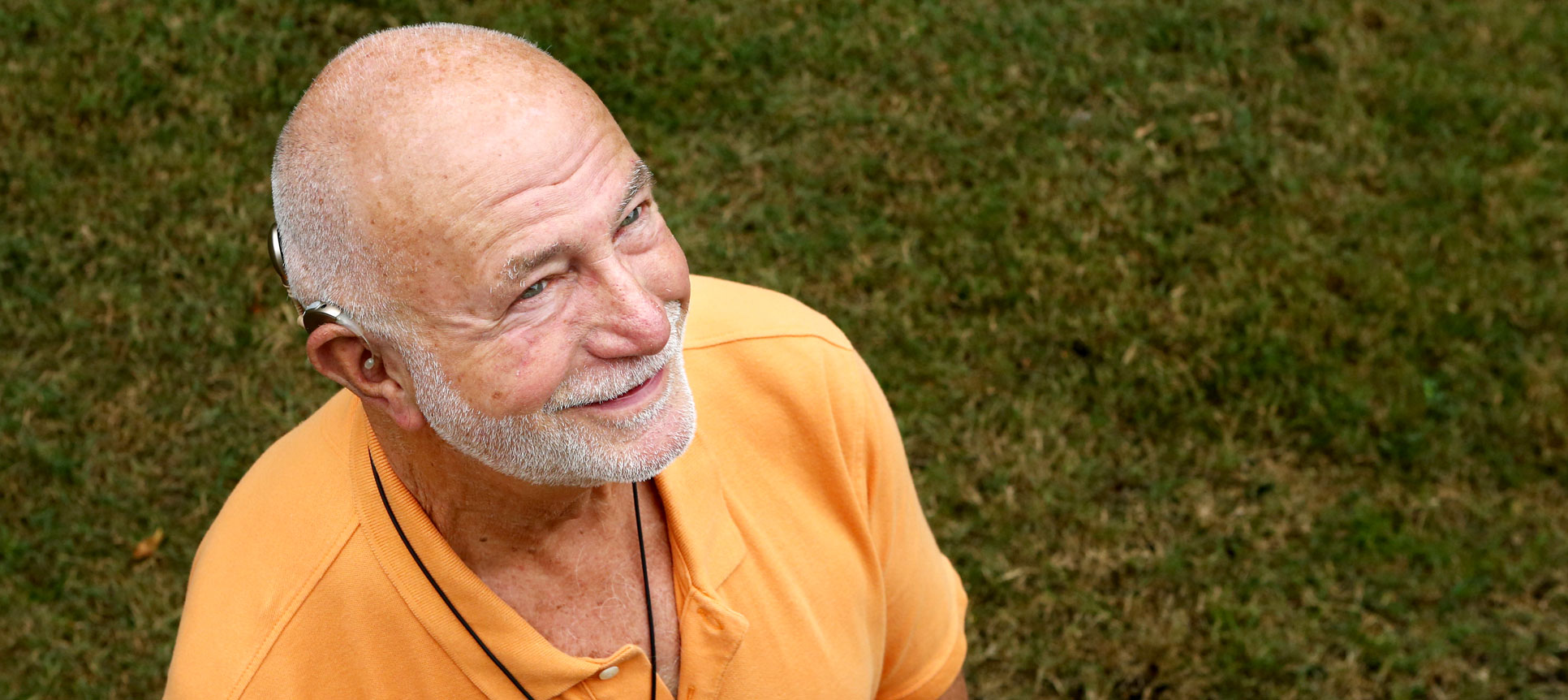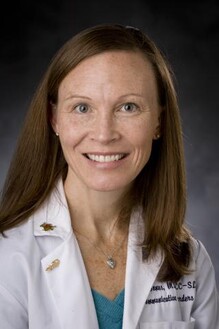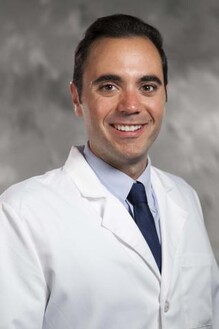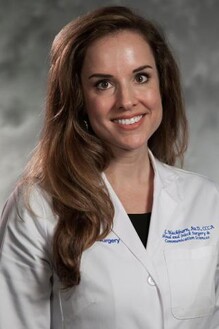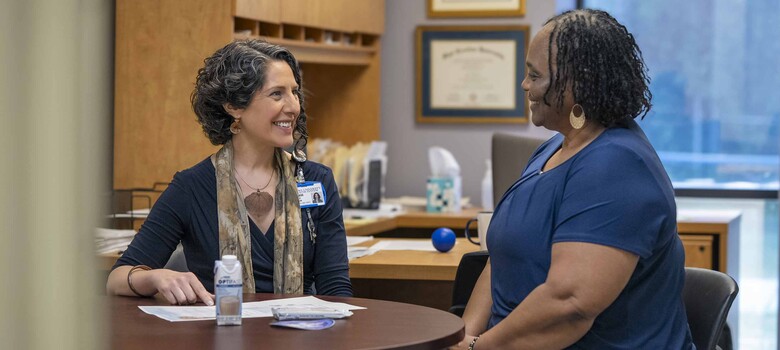 From the DukeHealth.org archives. Content may be out of date.
From the DukeHealth.org archives. Content may be out of date.
It Takes a Team to Hear Again After Cochlear Implant

Bryan Seiler can now chat with his wife Amelia during breakfast thanks to his cochlear implant.
After 30 years of losing his hearing, 76-year-old Bryan Seiler of Wake Forest received a cochlear implant at Duke. It changed his life.
Feeling Isolated
Bryan Seiler’s hearing started to decline when he was in his 40s – first in his right ear and, a few years later, in his left.
Hearing aids in each ear brought some relief, and, as Seiler described it, he managed for years to “get by.” Eventually, even increasingly powerful hearing aids could not help the retired husband, father, and grandfather.
“I found myself becoming frustrated and discouraged by my hearing loss,” said Seiler. “Soon, it was nearly impossible to know that I was being spoken to, let alone hear what was being said. I couldn’t carry on a phone conversation or watch TV, and I feigned laughter to jokes I couldn’t hear. I felt isolated even with my friends and loved ones.”
Being unable to chat with Amelia, his wife of 53 years, was especially hard. “More than half the sounds in my world had disappeared,” said Seiler.
Choosing Cochlear Implantation
Seiler had heard about cochlear implants – a surgically implanted electronic device for people who can no longer benefit solely from hearing aids – and began researching the possibility.
A recommendation from a trusted former colleague brought Seiler to Duke’s cochlear implant program. Testing showed his hearing loss to be in the severe range and that he was a good candidate for surgery.
In November 2016, Seiler's surgery took place as an outpatient procedure. He went home the same day. “There was no post-surgery discomfort or problem, whatsoever,” he said.
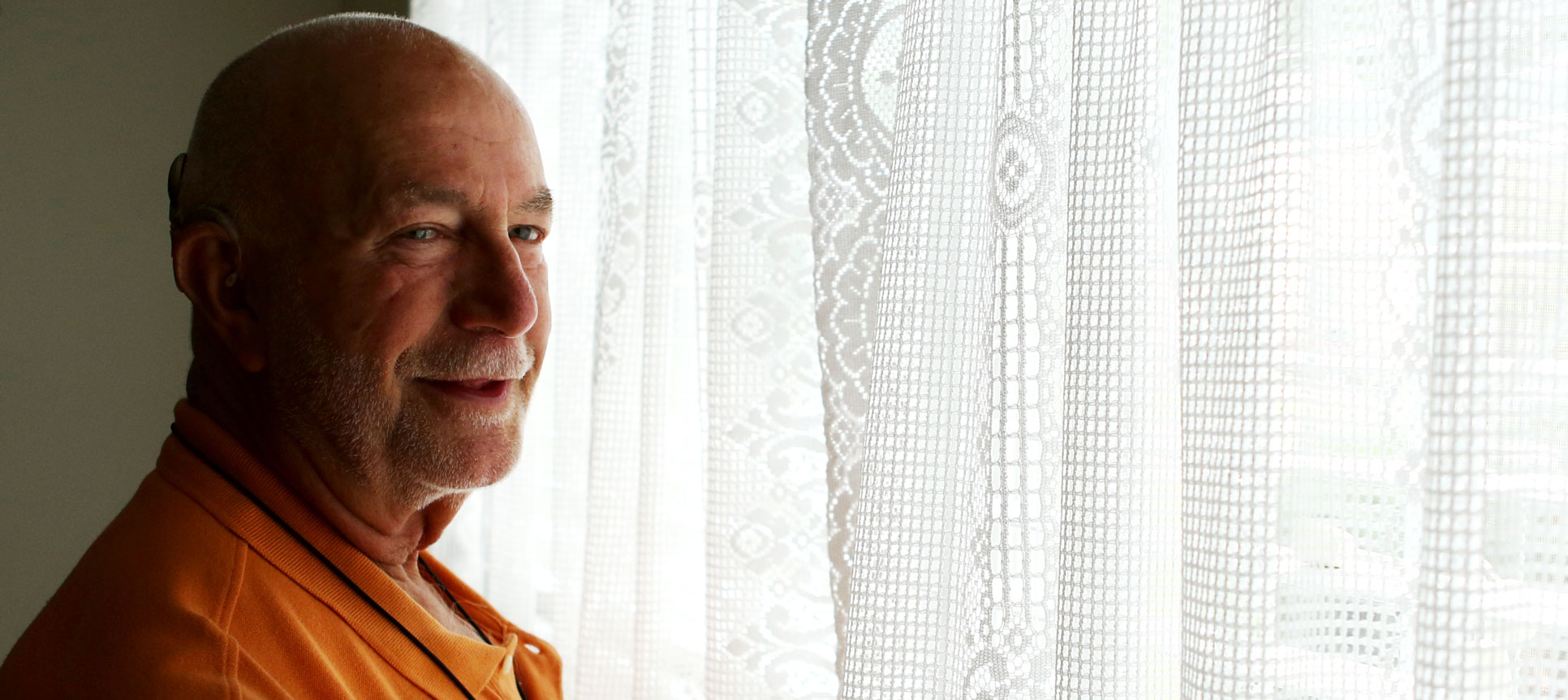
Hearing Again: A Team Effort
A cochlear implant does not work like a hearing aid, which amplifies sound. Instead, a cochlear implant works by picking up the sounds in the environment and transforming them into electronic signals that are routed from the auditory nerve to the brain.
Implant hearing and speech specialists adjust and fine-tune the device over several months for peak performance and assist the recipient to learn how to interpret the electronic signals as recognizable speech.
About a month post-surgery -- which allows enough time for the incision to heal -- Seiler’s implant was activated by Duke audiologist William Dillon, AuD, CCC-A. Though advised not to expect too much, too soon, Seiler could immediately hear Dillon speaking. “I hear you talking!” said Seiler to Amelia’s and Dillon’s delight.
Erin Blackburn, AuD, CCC-A, an audiologist who specializes in fine-tuning the implants, compares activating a cochlear implant for the first time to switching on a light in a dark room. “It can take a while for your sense of sight to become acclimated to the brightness,” said Blackburn. “It’s the same with a cochlear implant and hearing. Each person progresses at their own pace and Mr. Seiler is one of those who quickly became acclimated.”
Speech pathologist Carlee Jones, CCC-SLP, MS, worked with Seiler for about six months, formulating daily exercises to improve his skills at understanding the new sounds he could now hear. One activity was watching short TV segments and repeating to his wife what he heard.
Diligently doing his homework paid off. Seiler’s pre-surgery hearing with understanding level was just 16%. Eight months after his implant, his hearing with understanding soared to 85%. It is enhanced with an implant-linked hearing aid in his left ear. Jones said he continues to make progress.
Speaking with His Grandchildren, Listening to Hummingbirds
Seiler considers his hearing transformation to be nothing less than a miracle. “I’m speaking on the phone with my children and grandchildren for the first time in 10 years!” he said. “I sit at a table with a dozen or so people and fully take part in the conversation. I chat with Amelia at breakfast, listen to my favorite NPR programs, and I hear the hummingbirds at our bird feeders.
“The entire Duke cochlear implant team has been there for me, wanting me to succeed,” said Seiler. “And, what’s so exciting, is I am still learning and improving as time goes on. These extraordinary individuals have returned to me all the things which I thought had been lost to me forever.”
